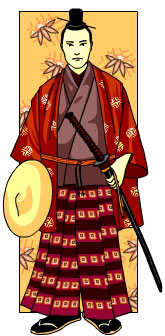Freebie Film Tip #18: Sessue Hayakawa in the Wild West
Created | Updated Nov 18, 2012
Freebie Film Tip #18: Sessue Hayakawa in the Wild West

Sessue Hayakawa, The Last of the Line, 1914.
Dances with Wolves, it's not. It's actually better. (No Kevin Costner.)
I'm sure this is not the sort of movie Hayakawa wanted to be making. On his own, he made a beautiful film about Japan, co-starring his wife. But Hollywood wanted Westerns. Hayakawa got stuck playing Indians and Mexicans. He played along until they tried to make him play a sheik. Then he quit, and Rudolf Valentino got started. (Japanese=Arab versus Italian=Arab. Go figure.)
The Last of the Line is surprising in many ways. Unlike a lot of other Westerns, this movie isn't about the cowboys, but the Indians. The Sioux village is pretty authentic. The horses and dogs are cool. (You can usually tell in a Western what the horses think of the picture. It's not often flattering.) Aside from Hayakawa and the girl at the riverbank, Tsuru Aoki, the actors are Sioux – a tribe of Oglala Lakota from a reservation. The Chief, Grey Otter, is played by Joe Goodboy, himself a Sioux (and, allegedly, 80 years old at the time). So whatever they're doing, they are trying to show you a way of life. The gear is the real thing – if you think it doesn't 'look right', you've been watching John Wayne.
The action is rather balletic – emotions are fully explored, wordlessly, but slowly. The story is not what we expect: warning, the moral is rather, well, Klingon. It's all about honour. But producer Thomas Ince got credit for freeing people from Brooklyn Indians, and for trying to make other people's stories seem real. It's a shame he didn't start a trend – we might have been spared years and years of awful Western stereotypes.
The film industry didn't know what to do with Sessue Hayakawa. He was the best-paid actor of his time, and a real heart-throb: handsome, and a perfectly splendid actor. But he was Japanese. Not Japanese American, Japanese, the son of a fine samurai family. He came to the US to study at the University of Chicago, but on the way home, he caught the acting bug in LA, took up with Japanese Theatre Persons, and later got 'discovered', as the say, by the movies. During World War II, Hayakawa was stuck in France, where he took up painting for a living, and fought the Germans by joining the Resistance. After the war, of course, he had to prove to the HUAC that he wasn't a threat, but his film friends helped, he got back into the country, and finally won an award for Bridge over the River Kwai. Amazing man.

If you want to see what else Hayakawa had to put up with in his early film career, watch The Cheat, in which he plays a pretty nasty piece of work. (Can you say 'Talons of Wang Chiang'? I knew you could.)
The film is creepy and full of the usual racist claptrap. It's CB DeMille, what do you expect? So maybe Hayakawa would rather be playing an Indian.
We're glad modern TV has got that stereotyping thing sorted out…er, that statement comes with a tongue-in-cheek smiley and a link to Henry Cho's appearance on Designing Women. At least, people know to laugh at it now.
